Highlights
-
The world's first successful petabit-class transmission over more than 1,000 km using standard 19-core optical fiber, achieving a transmission rate of 1.02 petabits per second over a distance of 1,808 km.
-
Achieved using a newly developed standard 19-core optical fiber, equivalent to 19 standard fibers, low loss across multiple wavelength bands, and the development of an optical amplification relay function compatible with this fiber.
-
This is a major step to realize future long-distance, large-capacity optical communication systems.
An international research team led by the Photonic Network Laboratory at the National Institute of Information and Communications Technology (NICT, President: TOKUDA Hideyuki Ph.D.), and including Sumitomo Electric Industries, Ltd. (Sumitomo Electric, President: INOUE Osamu) have set a new world record in optical fiber communications, achieving data transmission at 1.02 petabits per second over a distance of 1,808 kilometers (roughly equivalent to the distance from Sapporo to Fukuoka, from Missouri to Montana or from Berlin to Naples). The experiment used a specially designed 19-core optical fiber with a standard 0.125 mm cladding diameter, compatible with existing fiber infrastructure. With a capacity-distance product of 1.86 exabits per second x km—the highest ever recorded—this demonstration marks the fastest long-distance transmission achieved in any optical fiber to date. The result represents a major step forward in developing scalable, high-capacity networks and addressing the world’s growing demand for data.
A standard cladding diameter 19-core optical fiber has been demonstrated to transmit more than 1 petabit per second in the past, but over relatively short distances, well below 1,000 km. The research team has achieved a dramatic extension of the transmission distance by developing a novel 19-core optical fiber also with a standard cladding diameter but with low loss across multiple wavelength bands used in commercial optical fiber transmission systems. In addition, an optical amplification system was developed to support the new optical fiber, which enabled a world record for long-distance high-capacity transmission. The newly developed technology is expected to make a significant contribution to both the expansion of the communication capacity and the long-range extension of optical communication infrastructure in the future, when communication demand increases.
The results of this experiment were accepted as a post-deadline paper presentation at the 48th Optical Fiber Communication Conference (OFC 2025) and presented on Thursday, April 3, 2025.
Background
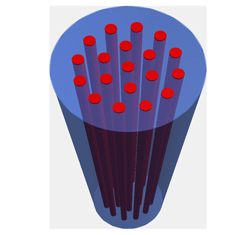
Figure 1 Image diagram of the newly developed 19-core optical fiber
Research on new types of optical fibers and optical transmission systems that exceed the limits of conventional optical fiber transmission is being actively pursued around the world. An example of such fibers is multi-core optical fibers, where multiple cores share a common cladding to multiply the transmission data rate. Over the last decade, NICT has demonstrated long-distance, high-capacity transmission using various standard cladding diameter optical fibers (see Table 1). The previous record of capacity-distance product has been achieved with an uncoupled 4-core fiber to transmit 0.138 petabits per second over 12,345 km. Given the relatively low number of cores, this demonstration required the extension of the transmission band to the S-band, which is generally unavailable for commercial long-distance transmission systems.
Alternatively, transmission methods using multi-mode optical fibers or coupled multi-core optical fibers are being researched and developed as next-generation high-capacity transmission technologies that break through the limitation of the number of cores of uncoupled multi-core optical fibers, based on the premise that interference between cores or modes can be eliminated by MIMO digital signal processing at the receiver. To date, NICT have achieved a transmission capacity and distance of 0.273 petabits per second and 1,001 km using a 15-mode optical fiber with a standard cladding diameter. This result was mainly limited by the properties of multimode optical fibers, where large differences in propagation characteristics for each mode break their orthogonality, preventing the full digital recovery of the signal using MIMO. Coupled-core multicore optical fiber transmission is more suitable for long-haul transmission because the cores in these fibers all have the same light propagation characteristics, but the transmission over an earlier generation of 19-core coupled-core fiber was limited to 1.7 petabits per second over a relatively short distance of 63.5 km. Reducing the loss of the 19-core fibers and realizing optical amplification repeater functions for long distance transmission has been key challenges.
Achievements
Sumitomo Electric was responsible for the design and manufacture of a coupled 19-core optical fiber with a standard cladding diameter (see Figure 1), and by optimizing the structure and arrangement of the cores, achieving a reduction in optical fiber losses across multiple wavelength bands (C-band and L-band) (see Appendix Figure 6 for details). NICT and the international team were responsible for the development and demonstration of a transmission system with the ability to amplify signals of 19 cores simultaneously, achieving a transmission capacity and distance of 1.02 petabits per second and 1,808 km.
The transmission system consisted of a transmitter and receiver, and a set of 19 recirculating transmission loops (see Figure 5 for details). Each loop ran through one core of an 86.1 km, 19-core, optical fiber with signal combiners and splitters, a set of optical amplifiers, and a control switch. The amplifiers were used to boost the signal before transmission in the 19-core fiber and to compensate its loss after transmission. For this demonstration, the signals travelled 21 times through the recirculating loop, for a total transmission distance of 1,808 km. Each amplifier was actually composed of two smaller devices to separately amplify the C and L bands. This allowed a total of 180 wavelengths in the C and L bands, each using 16QAM signals.
Table 1 New optical fibers with standard cladding diameter and world records achieved by NICT
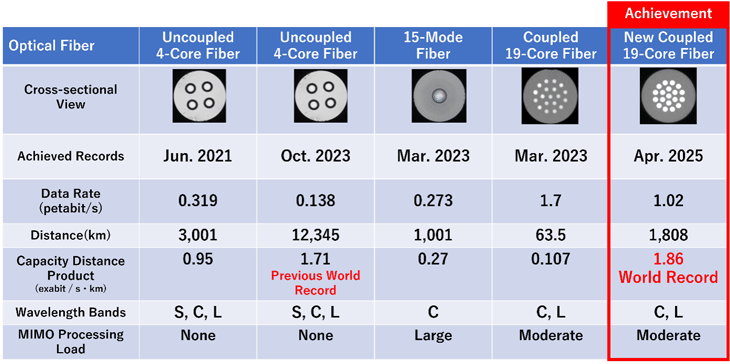
After transmission, the signals of all cores were received simultaneously by a 19-channel receiver. A digital signal processor eliminated the interference between cores using a MIMO subsystem and calculated the available data rate of the system (see Appendix Figure 7 for details). The total transmission capacity exceeded 1 petabit per second, and the total transmission distance was 1,808 km, which is roughly equivalent to the distance from Sapporo to Fukuoka, from Missouri to Montana or from Berlin to Naples, and it has been demonstrated that it can be applied to networks connecting large cities (see Table 1). When converted to the product of transmission capacity and distance, which is a common measure of transmission capability, it is 1.86 exabits per second-km, which is a world record for standard cladding diameter optical fibers (see Table 1).
Future Prospects
In the post-5G society, the volume of data traffic is expected to increase explosively due to new communication services, and the realization of advanced information and communication infrastructure is required. The research of ultra-high-capacity transmission using coupled 19-core optical fibers and advanced optical amplification has greatly advanced the development of technology for the realization of high-capacity, long-distance optical communication infrastructure in the future. In the future, we hope to further improve the efficiency of optical amplification technology, optimize MIMO digital signal processing, and explore the possibility of practical applications.
The results of this demonstration were highly evaluated at the 48th Optical Fiber Communications Conference (OFC 2025, Venue: San Francisco, USA, March 30 (Sun) to April 3 (Thu), 2025), the largest international conference related to optical fiber communications, and accepted as the best hot topic paper (Postdeadline Paper), as announced on Thursday, April 3, 2025 (local time).
Role of each organization
- NICT: Design and development of the transmission system, and the transmission experiments
- Sumitomo Electric: Design and development of the coupled 19-core optical fiber
References
International Conference: Optical Fiber Communication Conference (OFC 2025) Post-deadline Paper
Title: 1.02 Petabit/s Transmission Over 1,808.1 km in a 19-Core Randomly-Coupled Multicore Fiber
Authors: R. S. Luis, M. v. d. Hout, S. Gaiani, B. Kalla, D. Orsuti, Y. Goto, G. Rademacher, B. J. Puttnam, A. Inoue, T. Nagashima, T. Hayashi, P. Boffi, T. Bradley, C. Okonkwo and H. Furukawa
Previous NICT Press Releases
- World’s First Standard Cladding Diameter 19-core Optical Fiber with Record Transmission Capacity
https://www.nict.go.jp/en/press/2023/05/10-1.html - World's First Successful Transmission of 1 Petabit per Second in a Standard Cladding Diameter Multi-core Fiber
https://www.nict.go.jp/en/press/2022/05/30-1.html - Demonstration of World Record: 319 Tb/s Transmission over 3,001 km with 4-core optical fiber
https://www.nict.go.jp/en/press/2021/07/12-1.html
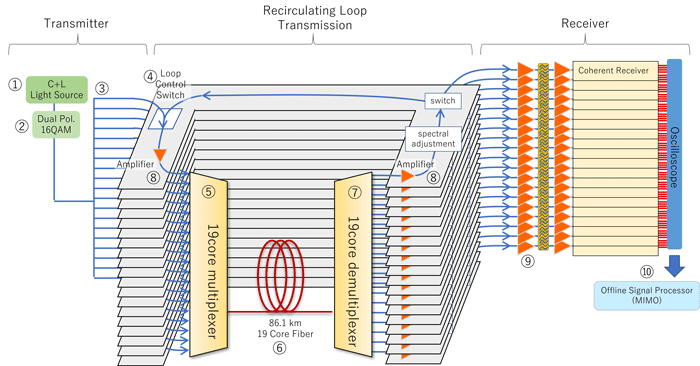
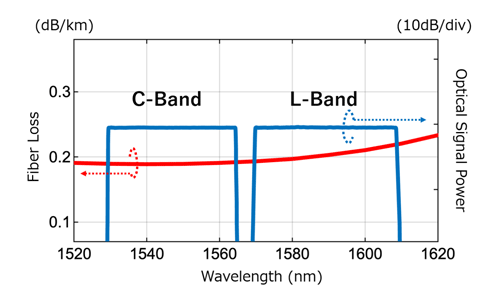

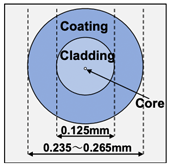
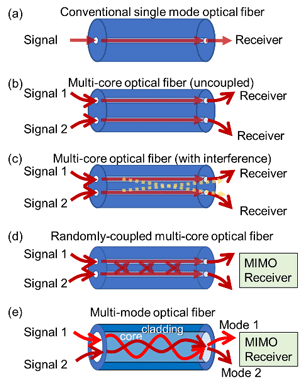
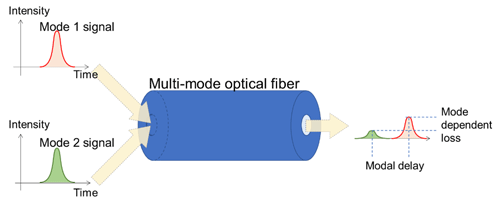
 ml.nict.go.jp
ml.nict.go.jp